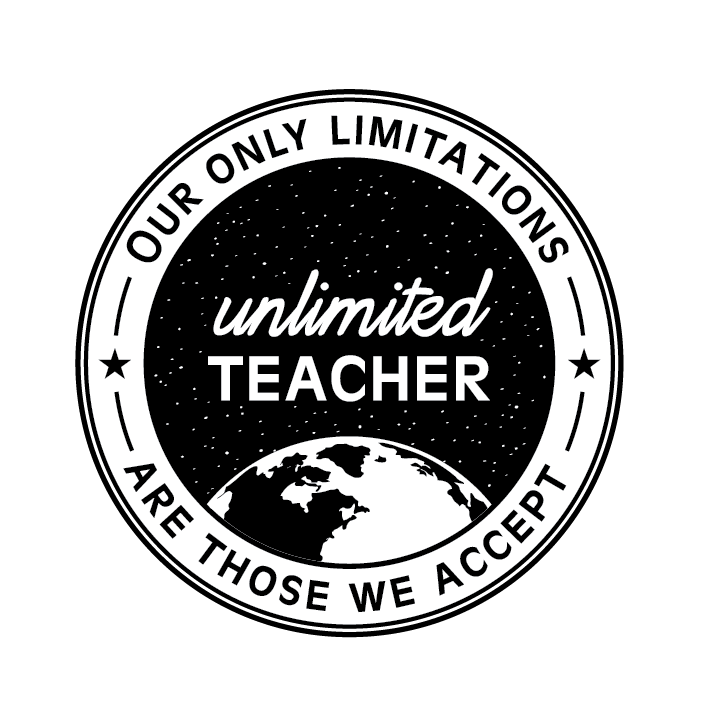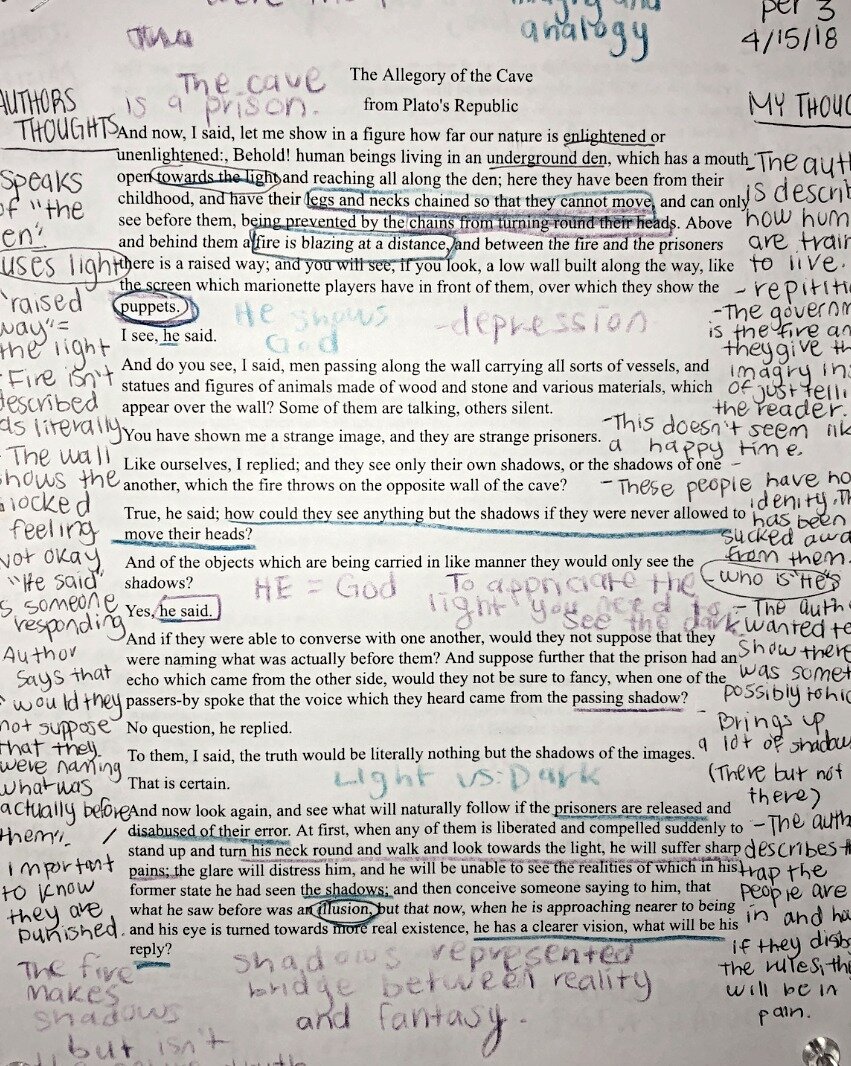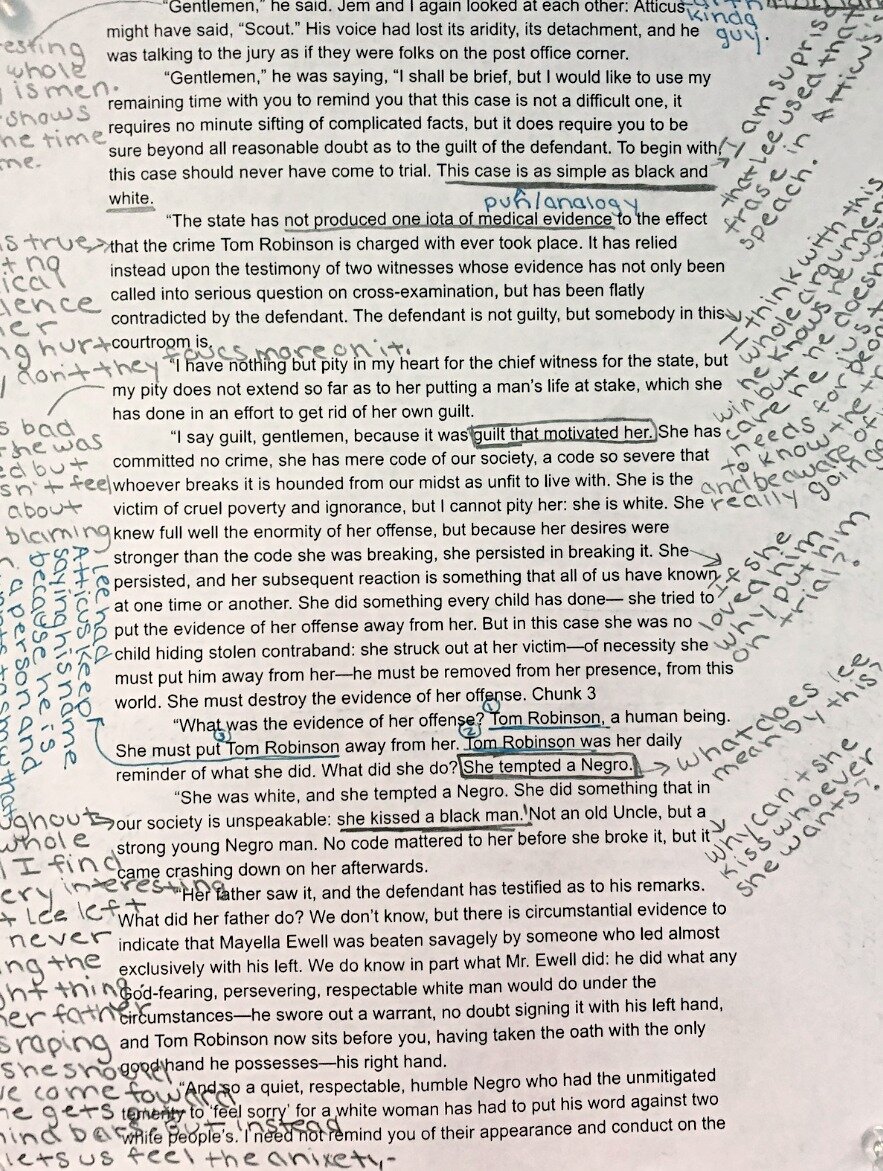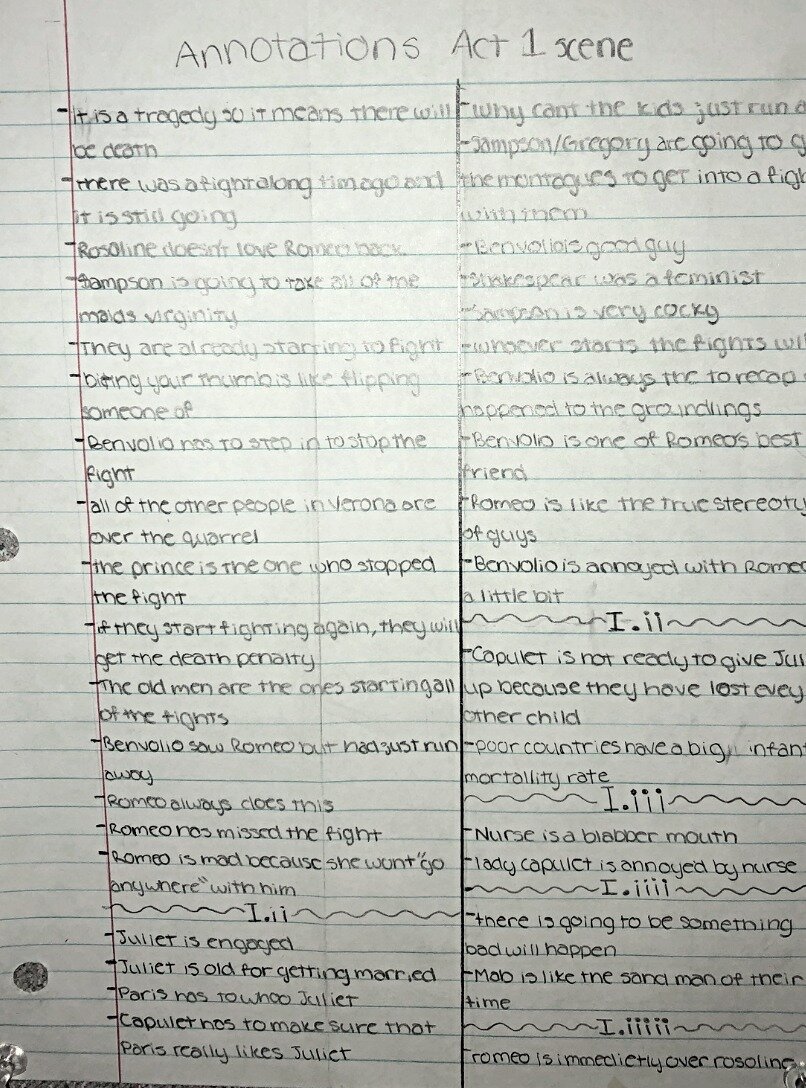Annotate My Way, or Else.
Why?
I completely understand the benefits of repeated practice with a particular form of writing, annotations, brainstorming. Repeated practice with anything will help make a person better at that task.
But aren’t these areas of education which can provide more choice? If I write something on paper, I’m going to remember it, but not if I type it. If I read something on paper, I’ll remember it, even it’s placement on the page, but I struggle to remember much when reading on a device. It’s the way I work.
What about how students work? Why not allow for their preferences?
And my goodness, what about all the different My Way Systems students have to navigate as they move from grade to grade?
When I got rid of novel questions, I replaced them with a more free form note-taking assignment: annotations with a graphic organizer I call a Reading Sheet. It works and is great for readers who need the practice with particular reading strategies. But it became just another homework assignment and many of my students could benefit from more freedom and choice.
I moved to Left & Right Annotations. In my class, or really, I would think any class or anytime a person reads a text, two things must happen: the reader must understand what the author is doing and the reader must connect with the text.
I love my Left and Right Annotations because it’s a simple set up (no graphic organizer required). It’s simple, memorable, and transferable.
On the LEFT, write about what the author LEFT for you to find.
On the RIGHT, write about the connections you made with the text; the Thoughts, Questions, and Epiphanies which make you wonder if you’re RIGHT.
To have a copy of my Left and Right Annotations, subscribe to unlimitedteacher.com and I’ll send it straight to your inbox. If not, you can still have it - please click here.
Thought, Questions, and Epiphanies are a staple in our classroom and the basis for amazing literary discussion without the traditional question lists. It's a student favorite and the top "Must Keep" from our end of the year course survey. For more information, see my post We’re Killing the Love of Reading, but Here’s an Easy Fix.
During our TQE process, students would continue to make notes, but in different colors to show growth. The small group discussion would be in a second color and show they were listening and considering their group members' ideas, and then a third color shows the same engagement with the class discussion. I simply leave a cup of color pencils on our coffee table at the center of the room.
To see our classroom, check out the posts Photo Gallery of our DIY Flexible Classroom and Improve Soft Skills with Collaborative Screens. Or if you'd like a "tour," click here.
After students got used to the system, my Left & Right Annotations became optional. Many students continued to use them in my class and in their other subjects because the system worked for them. Their annotations came in handy when we discussed their Reading Comprehension scores. Students would also return to them when an essay or project was assigned, again annotating their own annotations to find their insights.
Student choice, voice, autonomy, and loads of critical thinking. No prompts or question lists required. Reading at its best.
And it’s their way, so it will be a lasting and effective tool.






